John Hurrell – 27 July, 2012
The head shape is froglike, but also like a praying mantis with huge compound eyes, except the mouth is bigger and dominates. Occasionally the slobbery stained lips part to reveal a thick, curling, blue veined tongue. A restless, protruding pointy headed slug with carnal pretentions.
Two new (new for Auckland, but made in 2008, 2006) Tony Oursler video sculptures are currently being presented in Fox Jensen, the type of work Tony Oursler is justly famous for: projected images of composite faces projected onto - in this case - a gesso covered ball and a carved bug-eyed polystyrene form.
Sang is the only one with a voice, a whiny little girl voice that goes with huge black lips, white teeth (not hideously yellow for a change) and independently revolving eyes - like a chameleon. The eyes are not bloodshot this time.
The head shape is froglike, but also like a praying mantis with huge compound eyes, except the mouth is bigger and dominates. Occasionally the slobbery stained lips part to reveal a thick, curling, blue veined tongue. A restless, protruding, pointy headed slug with carnal pretentions.
Oursler is skilled at making projections that you respond to viscerally. They amuse but also revolt, even frighten. The blended, disproportionately large, facial parts could come from one person or several. You rarely forget them.
The words though you might forget because the speaker repeats not articulated phrases but solo lexical items, single words over and over - inventively enunciated with different registers and emphasises. The meaning is more in the sound than the semantic content. We hear no sentences. Earlier works at Jensen have showed that Oursler has considerable skills as a writer but here the visual dominates over the aural, which enhances what we are seeing without being independentally communicative.
Oursler’s other work has no sound. It shows a wrinkled solitary eye blinking on a suspended sphere. The colour blanches from time to time or goes bluish while its pupil is never static but always restless. Most of the action is very subtle, found on the right hand side of the pupil beside the iris - a curved segment reflecting images from a nearby television or film screen, or a computer. In miniature we see their screens and then active animals like a running lion, leopard, wildebeest, and a puppy, as well as a woman’s face, many dappled trees, a wobbly jellyfish and a train. It could be about memories and not intended to be too literal.
It is fascinating that Oursler uses this method to draw the viewer in up close so they scrutinise the moving image for detail. He seems to be referencing Flemish painting like van Eyck’s Arnolfini Portrait (1434), where we see the room reflected off a central convex mirror positioned between the newly married couple. It reminds me also of the Jack Kerouac novel Visions of Cody (1973) where Kerouac spends several pages describing what he sees reflected on the side of a headlight of a parked car. A microcosm discreetly hidden in a macrocosm.
Being on a sphere hovering in space heightens the humour of an eyeball (abstracted ganglion) on which is projected another, slightly smaller reflective eye. Blink is an intriguing accompaniment to the twin-but-separately orbed, very vocal (but nonsensical) Sang. A wonderful exhibition.
John Hurrell
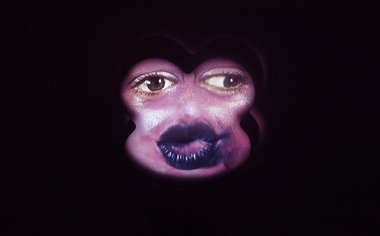
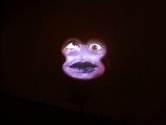
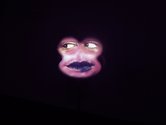
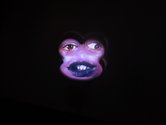
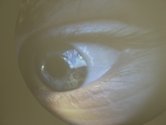

 Advertising in this column
Advertising in this column Two Rooms presents a program of residencies and projects
Two Rooms presents a program of residencies and projects



This Discussion has 0 comments.
Comment
Participate
Register to Participate.
Sign in
Sign in to an existing account.